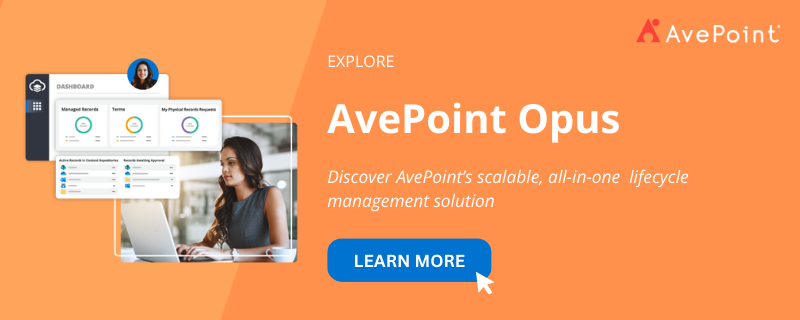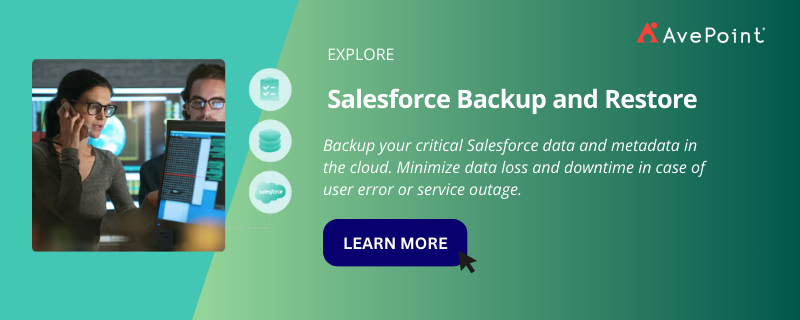The Vital Role of Data Governance to Achieve Quality Salesforce Data


With the unprecedented surge in data — projected to increase by 22% this year according to the Salesforce State of Data and Analytics 2023 report — and the rapid advancements in AI, maintaining data quality and security has become more critical than ever.
Notably, the AI and Information Management 2024 Report found that 52% of organizations faced challenges with data quality during AI implementation, while 71% expressed serious concerns about data privacy and security when considering AI deployment.
The key to success in any data-driven business initiative lies in data governance, which ensures data quality, trust, and privacy. The AI & Information Management Report also emphasized that effective data governance enables organizations to maximize the value of their data assets. Beyond ensuring data quality and regulatory compliance, data governance also democratizes data access for all stakeholders, making it a critical component for organizational success.
This blog post explores common challenges undermining the quality of Salesforce data and discusses how implementing data governance can help organizations achieve reliable, high-quality data.
Roadblocks to Achieving Quality Salesforce Data
Here are some of the most prevalent challenges that negatively impact the quality of Salesforce data:
Roadblock #1: Data Silos Lead to Fragmented Customer Data
Use Case: In the Consumer Packaged Goods (CPG) industry, nearly half of companies are facing challenges collecting and integrating the volume of data needed for successful AI adoption. This is largely due to data fragmentation across large numbers of SKUs, expansive supply chain and warehousing networks, and complex product categories. Data silos in a fast-moving CPG organization lead to fragmented and inconsistent customer information across departments. For example, the sales and marketing teams might have different customer data, resulting in disjointed interactions and ineffective campaigns. This fragmentation can cause missed sales opportunities, inefficient resource allocation, and poor customer experiences. Ultimately, this fragmentation hampers strategic decision-making and weakens the organization’s competitive edge.
Solution: Implementing an effective information lifecycle management system is a crucial building block for establishing a sound data governance framework. Information lifecycle management solutions like AvePoint Opus provides a unified view for content lifecycle management, keeping both active and inactive data visible. AvePoint Opus is designed to help organizations manage their content across various repositories to address fragmented customer data across different departments. We are so excited to share our AvePoint Opus roadmap with you at Dreamforce 2024 set on September 17 to 19, 2024. Head over to our Dreamforce 2024 page to know more.

Roadblock #2: Poor Data Quality Erodes Trust in Data
Use Case: According to the Office of the National Coordinator for Health Information Technology report, out of 100 medical records, at least 7 are mismatched or duplicates. Without proper data governance, a healthcare organization using Salesforce may face inaccurate and incomplete patient information, leading to incorrect treatments, missed appointments, and inefficient follow-ups. This compromises patient safety and care quality, increases legal risks, erodes patient trust, and damages the organization’s reputation. Retaining redundant, obsolete, or trivial (ROT) data also results in flawed insights and poor decision-making, hindering growth and efficiency.
Solution: Robust data governance and proactive information management are essential for addressing data trust and quality issues. AvePoint Maestro, AvePoint Opus’s AI-powered classification capability, effectively resolves duplicate medical records by automatically disposing of redundant data. AvePoint Maestro analyzes content and metadata and assigns policies to data to ensure there are no duplicates.

AvePoint Cloud Backup for Salesforce helps build trust in your data through its AI-powered suspicious anomaly and ransomware detection feature. It enables organizations to identify unusual patterns or data outliers that could indicate ransomware encryption, a runaway script, or malicious insider’s activity. It's designed to immediately notify your Salesforce operations teams of unusual activity that may require prompt investigation, proactively preserving the integrity of your Salesforce data.
Roadblock #3: The Overwhelming Increase in Data Leads to More Cyber Risks
Use Case: Keeping customers’ data private, secure, and protected is increasingly important, especially as 65% of e-commerce organizations will be fully data-driven by 2026. This means more data and more risk. Without solid data protection strategies, organizations risk data loss, business operation disruptions, and interruptions to customer transactions.
Solution: Having a comprehensive and reliable backup solution functions like an insurance policy against cyberattacks so you keep downtime to a minimum and protect business continuity. AvePoint’s Salesforce Backup and Restore solution provides automatic daily and on-demand backups, ensuring data integrity as volumes grow. Backups start when you log into AvePoint Online Services with your Salesforce account. It enables quick records restoration, including attachments and data relationships, maintaining complete backups, and preventing data loss due to a breach or accidental deletion.

Given these challenges, how can organizations build a strong foundation for data governance to prevent these issues from taking place? We discuss the key steps to achieve this in the next section.
7 Essential Steps to Establishing Effective Salesforce Data Governance
Organizations must protect, manage, and govern their data environment to maximize its potential. To guide you, here are seven crucial steps to ensure optimal Salesforce data governance:
1. Establish a Cross-Functional Data Governance Team
Assembling a cross-functional data governance team with clearly defined roles is essential for effective implementation. This team should include internal stakeholders from business, analytics, and IT teams, and external partners like consultants and systems integration partners. The data governance team is responsible for defining the data strategy holistically and assigning clear ownership across key stakeholders.
In addition, this data governance team can ensure that the data governance framework aligns with the organization’s overall business goals and objectives, and effectively addresses the specific needs and challenges of different departments and functions.
2. Assess Your Current Data Governance Maturity
Ascertaining the maturity of your data governance reveals the level of sophistication and effectiveness with which your organization manages its data assets. This maturity is assessed across several dimensions, including data quality, data management processes, compliance, and the ability to leverage data for strategic decision-making. Consider these guidelines when evaluating your data governance maturity:
Conduct a Self-Assessment
Use Salesforce’s maturity assessment tools to evaluate your current data governance practices across key areas such as aligning processes to objectives, organizational optimization, and leveraging technologies correctly. Identify what other compliance frameworks your organization is subject to like FINRA, SOX, etc. and ensure both Salesforce and connected systems are included.
Review Your Data Management Processes
Examine the effectiveness of your data management processes by tracking metrics such as data accuracy (percentage of correct data entries), data completeness (percentage of fully populated data fields), data consistency (alignment of data across different systems), data accessibility (time taken to retrieve data), and compliance adherence (number of compliance breaches or incidents). Employee surveys are a great early system to judge data and search accuracy. Data completeness can be enforced in places where you can apply validation rules, and leveraging Salesforce Shield in conjunction with Data Protection and DSPM (Data Security Posture Management) software can ensure you easily maintain compliance.
Assess Cultural Adoption
Determine how much a data-driven culture is embedded within your organization. This involves evaluating how well employees understand and use data in their daily tasks and the degree to which data-driven decision-making is encouraged and practiced. Data governance initiatives need to be embraced at all levels for the organization to ensure the effectiveness and sustainability of its data management practices.
By systematically evaluating these three key aspects, organizations can gauge their data governance maturity and identify areas for improvement.
3. Define Your Data Governance Objectives
Setting clear, measurable objectives that align with your business goals is crucial for successful data governance because it provides a roadmap for the organization’s data management efforts. These goals, often articulated using the Specific, Measurable, Attainable, Relevant, and Timely (SMART) framework, help break down vague objectives into actionable operational concerns, issues, and pain points that can be addressed through technology leadership.
By focusing on the desired outcomes that a governance project can produce regarding customer experience, timely information delivery, and better decision-making, organizations can ensure that their data governance efforts directly contribute to their strategic priorities.
Moreover, aligning data governance goals with business objectives helps gain executive buy-in, essential for successfully implementing any data governance strategy. It also enables organizations to prioritize which solutions should be developed and implemented first based on the importance of each objective and the difficulty of developing, implementing, and maintaining the corresponding solutions.
4. Develop a Governance Framework Based on Your Data Quality Goals
To ensure high-quality Salesforce data long-term, adopt a structured approach for cross-departmental data accuracy and consistency. Utilize existing data governance frameworks from industry bodies or engage data governance specialists to help you customize a data governance framework to your Salesforce requirements.
Data governance experts can help you create comprehensive policies that cover data quality, security, privacy, and compliance. Schedule a meeting with the AvePoint Product Team through our Dreamforce 2024 page to learn how we can help you deploy and enforce your data governance framework faster than ever in 2025. You can also join our free Dreamforce 2024 webinar on September 10 to know how you can make the most of this big event.

5. Provide Communication, Incorporate Feedback, and Engage Users
Clear communication is essential to ensure that all users understand the framework's governance policies, roles, and responsibilities. It helps set expectations, explain the reasons behind certain rules, and guide users in adhering to them. Furthermore, engaging users in the process promotes adherence to the governance policies and fosters a sense of ownership and responsibility among them.
Incorporating user feedback is equally important in establishing effective data governance. Users, the primary interactors with the data, can provide valuable insights into potential improvements, challenges, and the practicality of the governance policies. Their feedback can help refine the governance framework, making it more efficient and user-friendly. Ultimately, user engagement, clear communication, and feedback incorporation create a collaborative environment that values and utilizes data responsibly and effectively.
6. Monitor and Measure the Effectiveness of Your Data Governance Measures
Setting key performance indicators (KPIs) to measure the performance of your governance framework is crucial to ensuring that your data management practices are aligned with your strategic objectives. Regularly reviewing these KPIs allows you to assess whether the governance policies are being adhered to and whether they are yielding the desired outcomes, such as improved data quality, consistency, and security.
Regular monitoring and measurement can also help identify any gaps or weaknesses in the governance framework, enabling timely adjustments and improvements. This process is essential for maintaining the integrity of the data, ensuring compliance with regulations, and supporting informed decision-making.
Moreover, the effectiveness of a data governance framework is not static but evolves over time as the organization’s data needs, technologies, and regulatory environment change. Therefore, continuous monitoring and measurement allow organizations to adapt their data governance framework to these changes, ensuring its ongoing relevance and effectiveness. It also provides insights into the return on investment in data governance, helping justify and guide further investments in this area.
7. Conduct Simulation Drills to Test the Limits of Your Governance Policies
The adage “an ounce of prevention is worth a pound of cure” still holds true in today’s digital workplace. Conducting drills like simulating a SOX audit can help test the robustness of your governance policies. Questions like “How certain are you that you preserved all your financial records?” and “How secure is your financial data?” can reveal potential weaknesses. Regular testing ensures that your data governance framework can withstand real-world challenges so you can identify gaps in your data governance framework and make the necessary adjustments to ensure effective data management within Salesforce.
To test the limits of your data governance policies in Salesforce, you can use Salesforce Sandboxes to simulate the data environment without affecting live data. This allows for safe testing of how data governance policies perform under different conditions. Another way of doing this is by using tools like Salesforce Data Mask to protect sensitive information during simulations, ensuring that data remains secure even in test environments.
Champion Your Salesforce Data Governance with AvePoint
Effective governance of Salesforce data is a collaborative endeavor that involves defining data standards, policies, and procedures to maintain data integrity, compliance, and accessibility. Doing so helps organizations make informed decisions and drives business value while safeguarding sensitive information.
Data governance is a continuous dialogue among all stakeholders, adapting to evolving business needs, technologies, and regulations. However, a robust data governance framework enables your organization to confidently tackle data challenges head-on.
As a global leader in data governance and security for over two decades, AvePoint continues to empower organizations to enhance the efficiency of their digital operations, mitigate risks, and achieve compliance in a dynamic data landscape.
Fortify, optimize, and future-proof your Salesforce data with AvePoint.


Abby Payuyo is a Senior Technical Marketing Writer at AvePoint, covering Artificial Intelligence and Machine Learning. With over 20 years of experience in marketing communications and technical writing, including a recent stint in cybersecurity, Abby creates content that helps organizations navigate the challenges of the modern workplace with the help of AI & ML solutions.


